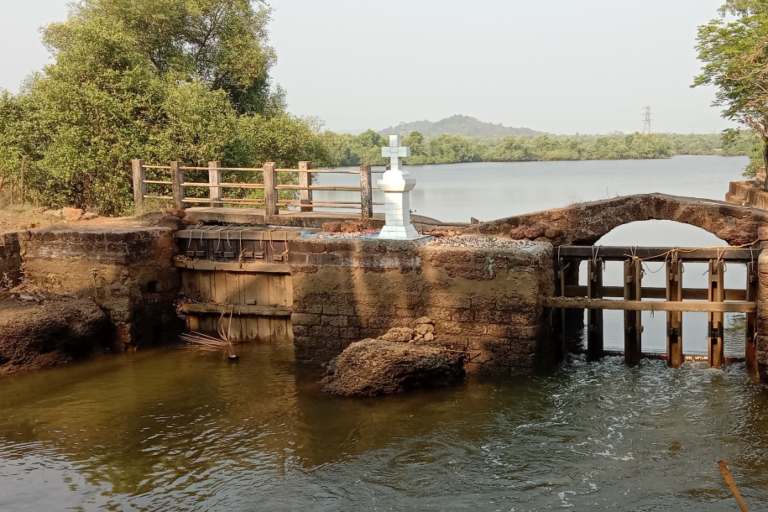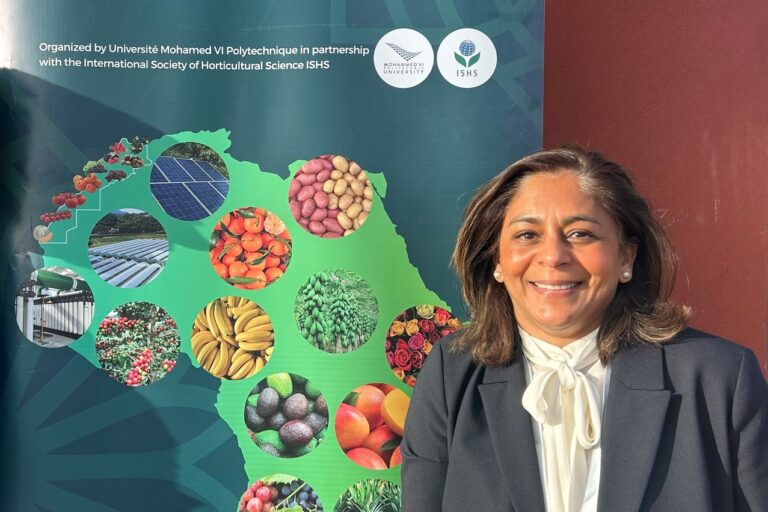By Neena Bhandari
Growing up on the Osmania University campus in Hyderabad (India), Gorur Harinath would meet medical students, who would sometimes join him and his mates for a game of cricket on the campus grounds. One day, curious about what was taught in the medical college, he asked one of the boys to show him his classroom.
He was taken to the anatomy laboratory, where students were performing dissection on dead bodies. “It was my introduction to medical science, but in that epiphanous moment, I decided that one day I would become a doctor”, says Dr Harinath, who graduated in medicine in 1970.
After graduation, most of his batchmates began applying to universities in the United States or the United Kingdom to pursue post-graduation and eventually migrate. “To get admission in the US, students had to sit an exam which was conducted in Singapore and other countries, but not in India. My father, who was a horticulturalist, couldn’t afford to send me overseas to sit the exam as we were six siblings and he was the only breadwinner”, he adds.
He began applying to universities in the UK and elsewhere. Australia emerged as one of the possible destinations. “I received a placement offer from the North Western General Hospital (now called North West Regional Hospital) in Tasmania almost instantly. The hospital not only accepted my qualifications, but it was also willing to fund my flight and that was a big incentive for me to accept the offer”, says Dr Harinath.
“In those days, the medical degree from Osmania University was recognized by the General Medical Council (GMC) in the UK. Once you were registered with the GMC, you could practice in any Commonwealth country so my visa application was approved immediately”, he adds.
But when he went to book his flight, the travel agent didn’t know anything about Tasmania and booked his ticket to Sydney. He travelled from Hyderabad to Chennai (Madras in those days) to Singapore to Perth to Sydney with just seven dollars. Foreign exchange was very restricted and he recalls arriving at Sydney airport, a much smaller precinct in those days, on a warm morning in November 1972 with only 50 cents left in his pocket.
“I was very hungry. Only a few kiosks were open so I approached a lady serving at one of the cafes and asked what I could buy for 50 cents. She just smiled, made me sit down and gave me a cup of coffee with toast and jam. Her kindness really made me feel welcomed and I said to myself, people must be really nice in this country”, says Dr Harinath.
He had no money and no ticket to fly to Tasmania. He waited for the Ansett Airlines (one of the major Australian airlines at that time) office to open and related his plight to the office manager, who just rolled his eyes and asked him why had he come to Australia?
“I explained that I was a doctor on my way to join the North Western General Hospital. He rang the hospital to confirm my credentials and connected me to Dr Ian Bell, the then president of the hospital. On a faint phone line, I could hear Dr Bell telling me that he couldn’t understand my “bloody Indian accent” and without realizing, I told him that I couldn’t understand his bloody Scottish accent. No sooner had the words slipped out of my mouth that I realized this may be the end of all that I had aspired for”, says Dr Harinath.
The hospital paid for his onward journey to Tasmania via Melbourne and also arranged for a 20-dollar allowance. “It was a lot of money in those days. When I landed at the Davenport airport, much to my surprise, Dr Bell was there to receive me. He drove me in his car to a three-bedroom house they had arranged for me. Later that night, he took me to his house for dinner. His wife had gone to great lengths to make me feel at home and prepared chicken curry and rice”, he adds.
The generosity of strangers in a new country left a lasting impression on Dr Harinath’s young mind. But coming from a large family, he was completely lost in that big house by myself. He missed family and friends, and the buzz of his hometown. Davenport was a very small town and the 200-bed hospital with only three or four doctors was very calm compared to the hospital in Hyderabad.
It took him a few weeks to get used to the accents and the functioning of the hospital. He says, “I had come with an open mind and heart to learn, which made the transition pretty smooth. I had worked as a senior house officer in Hyderabad under surgeons, who were trained in the UK. Professionally, I had the knowledge and skills to do what was asked of me so everyone was happy”.
While transition into his new workplace was almost seamless, he had to really make an effort to get used to the food in Tasmania. “I had grown up on dal, roti, rice and vegetables so to see raw meat was a first. My letters to family, written on an aerogram that took forever to reach Hyderabad, were filled with complaints about the food and how I longed for home-cooked dal-roti. Then one day, I received a letter from my dad saying that if I wanted to complain about food in Australia then I shouldn’t bother writing to them. His message was very clear: Eat what you get and adjust to the ways of the country you are in”, says Dr Harinath, who specialized in general practice.
“General practice in Urdu translates to `Hakim-e-aam’ – a doctor for all illnesses. In our two countries, the anatomy and medical procedures are the same, but the delivery system is different. In India of those days, for example, a surgeon was like a god in the theatre whereas in Australia, the surgeons would be humble to thank their assistants and juniors after surgery”, he adds.
He quickly learnt the Australian way. “We worked as a team supporting and filling in for each other as there was shortage of doctors. If a colleague required another pair of hands, we would jump in to help even if it was our day off work. We were totally dedicated to serving our patients and never looked at the clock. It was a great learning experience in the Australian medical system practice”, says Dr Harinath.
Being in a country town, he got an opportunity to work on all kinds of medical cases. After few years, he began to look for options to work in a bigger town and connected with his former classmates, who had been practicing in Sydney. He moved to Sydney at the end of 1974 and joined the Canterbury Hospital, and also enrolled in a postgraduate diploma in Tropical Health and Hygiene with the aim of serving in other countries in the Asia-Pacific region. He then had a six-month stint at Blacktown Hospital and joined his classmate’s private surgery in the inner-city Sydney suburb of Waterloo.
While working as a General Practitioner, he got interested in sports medicine. “At that time, there was no university giving a degree or diploma in sports medicine, and it was quite unique for an Indian doctor to be working in the field of sports medicine”, says Dr Harinath, who got associated with a local team – Balmain South Sydney Cricket Club – at Drummoyne.
“The then president of the club was Fred Bennett, who used to be the chairman of Cricket Australia. He had a business, which imported sporting goods from India. The person, who used to bring those goods to Australia was one Mr Sondhi. I happened to meet Mr Sondhi, who introduced me to Mr Bennett and they both suggested that I should work with the club. That’s how my association with the club began, first as a doctor and then I became a committee member”, he adds.
This heralded the next phase of Dr Harinath’s career. In the mid-90s, the committee asked him to become the president of the Balmain South Sydney Cricket Club, and its representative at New South Wales Cricket. In 2004, he was elected to Cricket Australia Board and in 2007 to the Board of NSW Cricket and then its chairman. The positions, he held, until 2012.
He says, “If 20 years ago, I had said that I will be on the Cricket Australia Board, people would have found me insane. But amongst all the Smiths or Jones, there is a Harinath now! This has just opened the door a little bit for those after me to go further up”.
He went on to serve as chairman of Multicultural NSW from 2013 to 2022. In recognition of his services to cricket and the larger community, he was he awarded an Order of Australia Medal (OAM) in 2009 and the Pravasi Bharatiya Samman medal in 2017, the highest honour conferred to Indians living overseas.
To new migrants, particularly prospective medical graduates, Dr Harinath’s refrain is: “Come with an open mind. Have a dream about what you want to do, and what you want to become, and then work towards realizing it. You can’t get a better country than Australia to achieve your ambition. There are some reservations, which we’ll break with time. Persevere and don’t get disheartened if you fall. Rise again, reposition yourself and make a fresh attempt to reach the summit”.
I had first met Dr Gorur (Harry) Harinath during the 2000 Sydney Olympics as the Press Trust of India correspondent for Australia. He was always warm, humble and generous with his time for interviews. Here is an excerpt from my interview with him in December 2022. I had emailed him the draft for fact check. He had wanted to share photographs from his earlier days, but then he fell ill and spent the past many months in and out of hospital. We regularly exchanged notes. Last month, he had messaged to read the text together one last time before publishing, but that was not be. Rest in peace, Dr Harinath.
© Copyright Neena Bhandari. All rights reserved. Republication, copying or using information from neenabhandari.com content is expressly prohibited without the permission of the writer and the media outlet syndicating or publishing the article.


